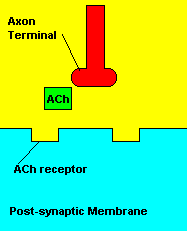




Insert catchy opening...

What is Biological Wafare?
Biological warfare, also referred to as germ or chemical warfare, is the utilization of any organism or toxin (e.g. bacteria, virus, toxins, rickettsia, and fungi). Its biological agents are seperated into five categories: bacteria, virus, fungus, toxins, and rickettsia.
Bacteria: Bacteria are classified as single-celled organisms that are the correspondents of disease.
Example: Anthrax, Brucellois, Tularemia, plague

A photograph of the intracellular parasite, rickettsia. (Image Citation)

A photograph of bacteria. (Image Citation)
Rickettsia: Rickettsia is a microorganism that bears a close resemeblence to bacteria, but they are in fact intracellular parasites.
Examples: Typhus and Q Fever
Virus: A virus is described as an intracellular parasite.
Examples: Venenzuelan Equine Encephalitis

A photograph of a virus. (Image Citation)
Fungi: A pathogenic fungi that is capable of causing disease to organisms
Examples: Rice blast, Cereal rust, Potato blight, and Wheat smut

A photograph of a pathogenic fungi. (Image Citation)
Toxins: Poison that is capable of being extracted from various resources.
Examples: Ricin

A image of castor beans from which the toxin, Ricin, is developed from. (Image Citation)
How Do They Work?
In order to understaned how biological weapons, it is important to know the agents they are primarily classified under.
Nerve Agents
Nerve agents, of all the agents biological weapons are classified under, are the deadliest. These types of agents inhibit the enzyme acetylcholinesterase in the tissue creating an excess. When the neurotransmitter, acetylcholine, is released from an axon terminal located in the central and peripheral nervous system, it moves through the sypnetic cleft to the other side of the synapse to bind to a receptor.
Watch the video on the left to gain greater insight on the workings of the chemicals within nerve gases in the human body!
What is the primary funtion of the neurotransmitter, acetycholine? Acetycholine is responsible for controlling muscle contraction; it is regulated and ceased by the enzyme, Acetycholinesterase. So now what happens when the chemicals from the nerve agent enter the tissues of the body?
The nerve agent binds to the enzyme, Acetycholinesterase, inactivating it and blocking its action. What is the result of this?
- The action of the Acetycholine can no longer be stopped and thus keeps on acting
- The neurotransmitter, Acetylcholine, will build up at the synapse
Normal Transmission of Acetylcholine.
ACh = Acetylcholine
E = Acetylcholinesterase

-
ACh is released at the axon terminal.
-
ACh crosses the synaptic cleft.
-
ACh binds with a receptor on the post-synaptic membrane.
- AChE (E) stops the action of ACh.

Transmission with Nerve Agent Poisoning
ACh = Acetylcholine
E = Acetylcholinesterase
NA = Nerve Agent
-
ACh is released at the axon terminal.
-
ACh crosses the synaptic cleft.
-
ACh binds with a receptor on the post-synaptic membrane.
-
Nerve agents (NA) block the ability of AChE to stop the action of ACh.
- ACh continues to work and more ACh builds up in the synapse.
Blister Agents
Blister agents are defined as toxins that destroy the individual cells in every tissue that these agents come into contact with. Some examples of these agents include: nitrogen mustards, sulfar mustard, and lewisite.